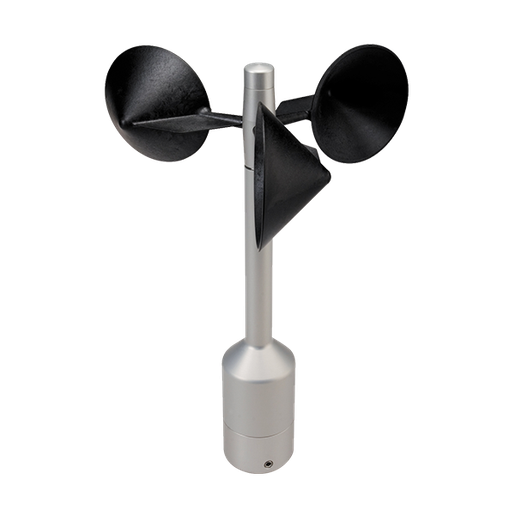Choosing the Right Anemometer: A Comprehensive Purchasing Overview
Choosing the Right Anemometer: A Comprehensive Purchasing Overview
Blog Article
All You Required to Learn About Anemometers: How They Function, Why They Issue, and Where to Use Them
Anemometers, though typically ignored in the world of scientific tools, play a critical function in different areas, offering beneficial insights right into wind speed and air movement patterns. Comprehending the technicians behind these devices is essential for any individual seeking to harness the power of this information. From meteorologists tracking weather condition patterns to designers developing structures with wind lots in mind, the applications of anemometers are diverse and significant. As we dig into the intricacies of anemometer innovation, we will certainly discover the internal functions of these gadgets, their significance, and the key considerations when picking the right anemometer for specific applications.

Anemometer Essentials
An essential tool used to measure wind rate and instructions, the anemometer plays an essential role in meteorology and various markets. An anemometer commonly is composed of 3 or four cups that turn in the wind, a vane that directs into the wind, and sensing units to track the turnings or motions. By determining the rotations or motions over a particular period, the anemometer can figure out wind rate. The vane aids determine wind direction by directing right into the wind, supplying important data for weather condition projecting, air travel, maritime procedures, ecological surveillance, and wind power applications.
There are numerous sorts of anemometers available, including cup anemometers, vane anemometers, hot-wire anemometers, and sonic anemometers, each with its distinct attributes and applications. Mug anemometers are frequently used for standard wind rate measurements, while vane anemometers are liked for directional measurements. Hot-wire anemometers are appropriate for reduced airspeeds, and sonic anemometers are perfect for high-precision dimensions in research and industrial setups. Recognizing the fundamentals of anemometers is vital for accurate wind data collection and evaluation across various markets.
Principles of Anemometer Procedure
Structure on the fundamental understanding of anemometer basics, the principles of anemometer procedure clarify the mechanics behind wind speed and instructions measurements. Anemometers operate the principle of air movement affecting a sensing unit, causing it to rotate. Mug anemometers, for example, have three or even more cups that record the wind, creating them to rotate quicker as the wind rate rises. The rotation rate is then exchanged a wind rate measurement. Vane anemometers, on the various other hand, make use of a tail or a probe that aligns itself with the wind direction, offering a measurement of wind instructions based on the alignment of the sensor. Hot-wire anemometers count on a heated cord that cools off as wind overlooks it, with the rate of cooling down establishing the wind speed. Ultrasonic anemometers step wind rate and direction by assessing the moment it considers ultrasonic signals to travel between transducers. Understanding these concepts is critical for trustworthy and exact wind measurements in different applications.
Relevance of Anemometers
The value of anemometers in meteorology and various markets can not be overstated. Anemometers play an essential duty in determining wind rate and direction, providing crucial data for climate forecasting, environment research studies, environmental tracking, and aviation procedures. Meteorologists count on anemometers to collect exact wind data, aiding them understand climate patterns, predict tornados, and concern timely cautions to the general public. In markets such as building and construction, agriculture, eco-friendly energy, and maritime procedures, anemometers are used to maximize procedures, ensure security, and raise effectiveness. Wind ranch operators use anemometers to examine wind problems and make best use of electrical power production from wind turbines. In the maritime market, anemometers help ship navigating by providing real-time wind info to captains, assisting them make notified choices to make certain safe voyages. In general, anemometers are vital devices that add dramatically to safety, efficiency, and informed decision-making in meteorology and a wide variety of markets.
Applications Throughout Different Industries
In the renewable power sector, anemometers play a crucial duty in examining wind conditions for wind farm positionings, ensuring ideal power manufacturing. Industries like building and mining utilize anemometers to check wind rates, essential for safety procedures, particularly when functioning at elevations or in open-pit mines where solid winds can browse around this web-site position risks. In agriculture, anemometers aid farmers in taking care of crop spraying by supplying real-time information on wind rate to prevent drift.

Choosing the Right Anemometer for Your Demands
For basic purposes, a mug anemometer is suitable for determining wind speed, while a vane anemometer supplies wind direction data. Hot-wire anemometers are suitable for low airspeed measurements, and ultrasonic anemometers supply high accuracy and durability.

Final Thought
In verdict, anemometers play an important duty in determining wind speed and instructions throughout different sectors. It is crucial to think about the relevance of anemometers in order to make enlightened decisions when choosing the most appropriate click here to find out more tool for gauging wind conditions.
There are various kinds of anemometers available, consisting of cup anemometers, vane anemometers, hot-wire anemometers, and sonic anemometers, each with its distinct features and applications. Cup anemometers are frequently made use of for standard wind rate dimensions, while vane anemometers are favored for directional measurements. Hot-wire anemometers are appropriate for reduced airspeeds, and sonic anemometers are excellent for high-precision measurements in research and industrial settings.Structure on the fundamental understanding of anemometer basics, the principles of anemometer procedure illuminate the technicians behind wind speed and direction dimensions. For basic purposes, a cup anemometer is suitable for gauging wind rate, while a vane anemometer offers wind direction data.
Report this page